Sustainable Food: The Impact of Food on the Environment
5 minute read
Updated on: 08 Aug 2021
Of the emissions from our food supply, agriculture is responsible for 82% (the green, yellow and orange slices of the pie below).
Where do these emissions come from?
Agriculture requires a lot of energy: for operating machinery, storing crops, housing livestock, and making the chemicals that are used to help plants grow (such as fertilisers). Most of this energy comes from burning fossil fuels, which releases carbon dioxide (CO₂) into the atmosphere
.
But that’s not all! Just making space to grow food produces almost a quarter of the emissions from the whole food supply chain! Why?
Along with CO₂, agriculture also produces nitrous oxide (N₂O) and methane (CH₄), greenhouse gases with an even stronger warming effect than CO₂. Where do these non-CO₂ emissions come from
? Let’s have a look at the picture below:
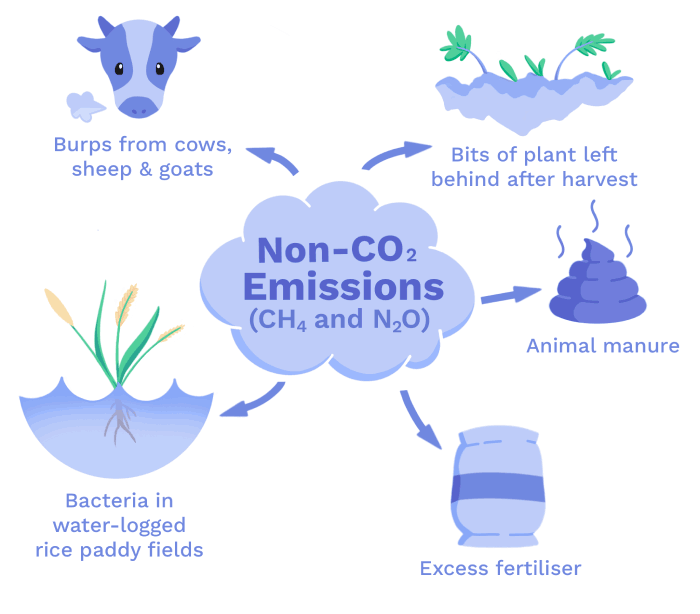
Non-CO₂ emissions in agriculture
On top of these emissions, agriculture accounts for 70% of global freshwater use and takes up 50% of Earth’s habitable land
. It is responsible for 80% of global deforestation
, and the chemicals used in agriculture pollute ecosystems and kill local wildlife (more details in the Advanced course)
.
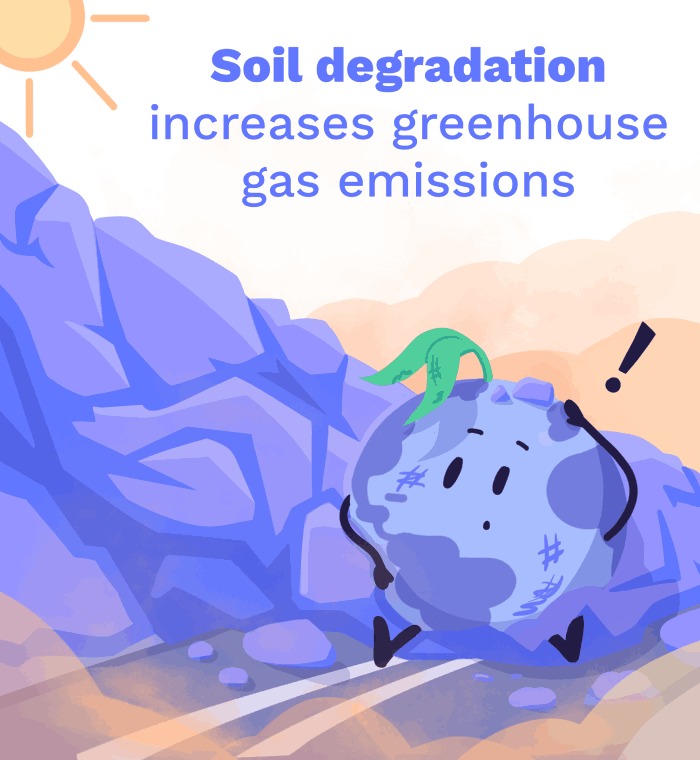
Soil degradation
By 2050 our global population is set to reach 9.7 billion and food production will have to increase by between 50-100%
. But how can we achieve this when agriculture is already putting such a strain on our resources and planet?
Can we make enough food sustainably?
To sustainably feed our growing population we will need to produce more food per unit of land. In other words, we will have to increase crop yields
.
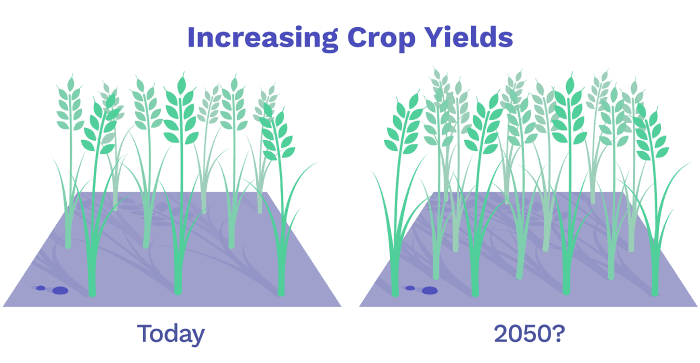
Increasing Crop Yields
Today, crop yields are usually only 20-80% as high as they could be. Why?
Farmers apply large amounts of fertilisers, pesticides, and water to minimize these problems. But can we solve them without using up resources?
How can we make farming more sustainable?
Soil quality can vary considerably within a single field, both spatially and in different seasons. Precision agriculture involves using technologies to measure this variability and adjust to it. By using site-specific sensing and sampling, the application of water, fertilizers, and pesticides can be optimised to maximise crop yields, while minimizing waste and environmental damage
.
Examples of these exciting technologies are given in the “Advanced” version of this course - check it out!
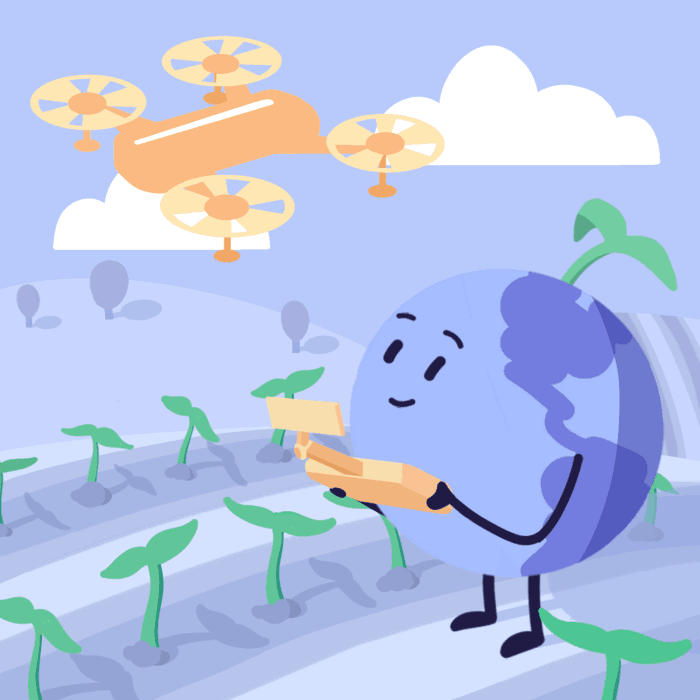
Precision farming
Instead of using expensive technologies, can we make nature do the work for us?
All the biological material, alive or dead, inside the soil is called organic matter.
Increasing organic matter in soils will be key to increasing soil quality:
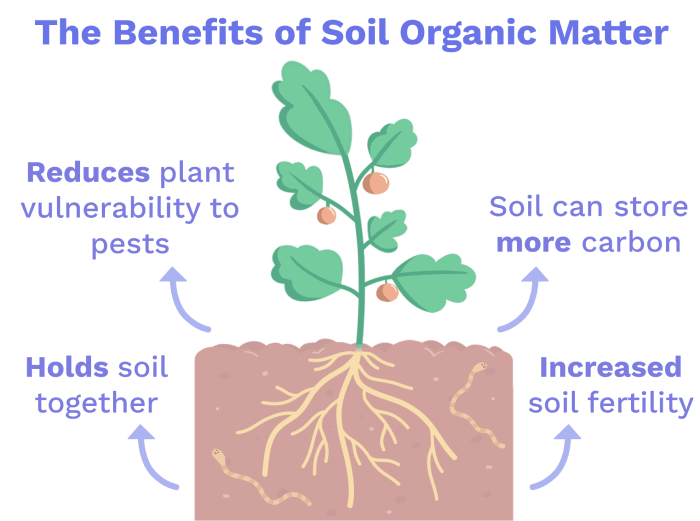
Benefits of Soil Organic Matter
More diverse systems require fewer external inputs, are more productive, and produce less waste. Let’s have a look at an example.
In agroforestry, crops (and sometimes livestock) are grown together with trees on the same land. What’s so great about it
?
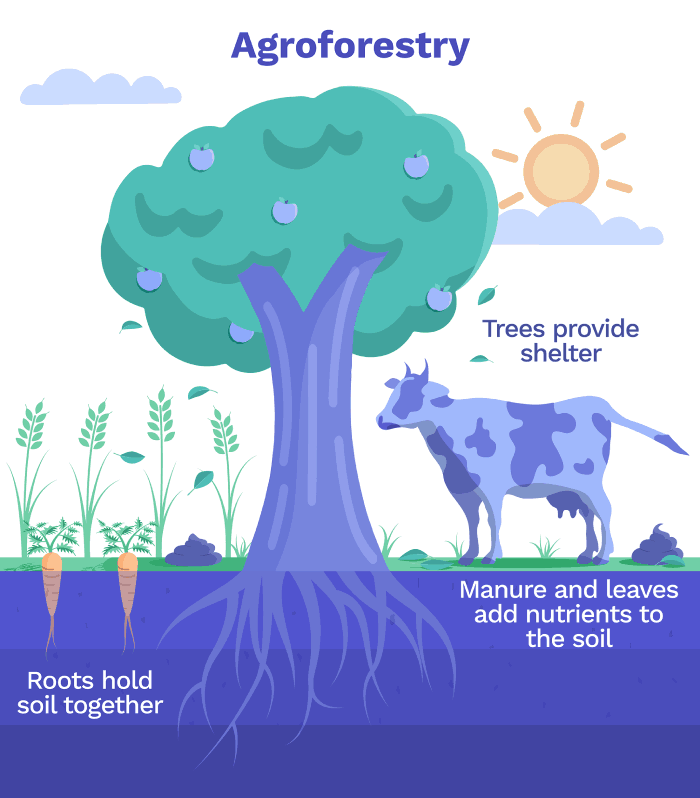
Agroforestry
As well as increasing crop yields, these diverse systems store more carbon, so more CO₂ is absorbed from the atmosphere!
Conclusions
Clearly, changes need to be made to traditional farming methods. Both natural and technological solutions will be needed to increase crop yields while reducing waste and resource use. But what if we could improve the crops themselves?
You might have heard of GMOs. While these get a lot of bad press, they are actually super useful for stopping climate change. Check out the “Advanced” version of this course to learn why!
So far, we’ve discussed how to make crop production more sustainable. But that only accounts for 27% of the emissions from the food supply chain. What about the other 73%?

